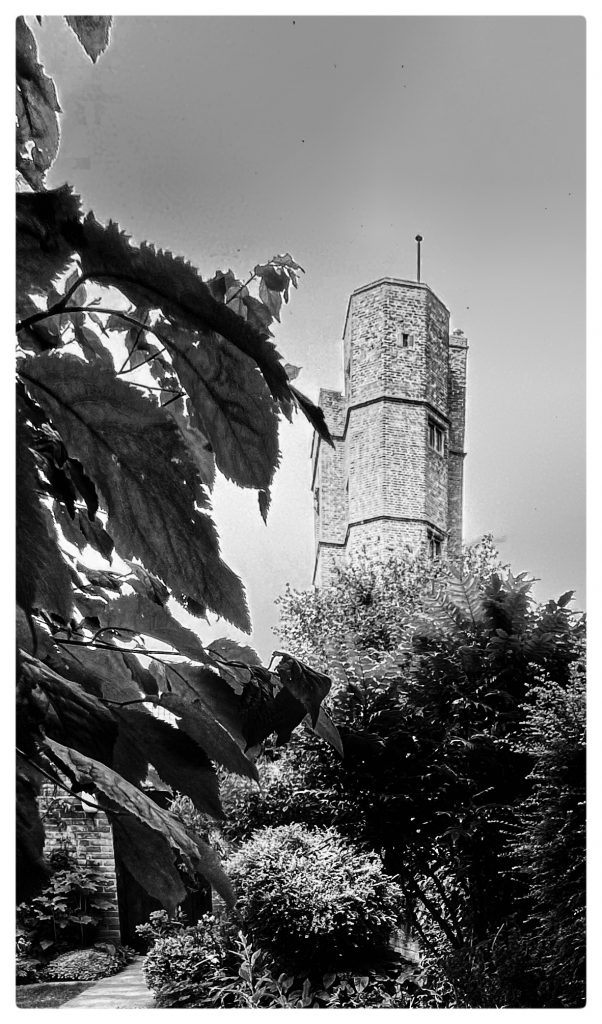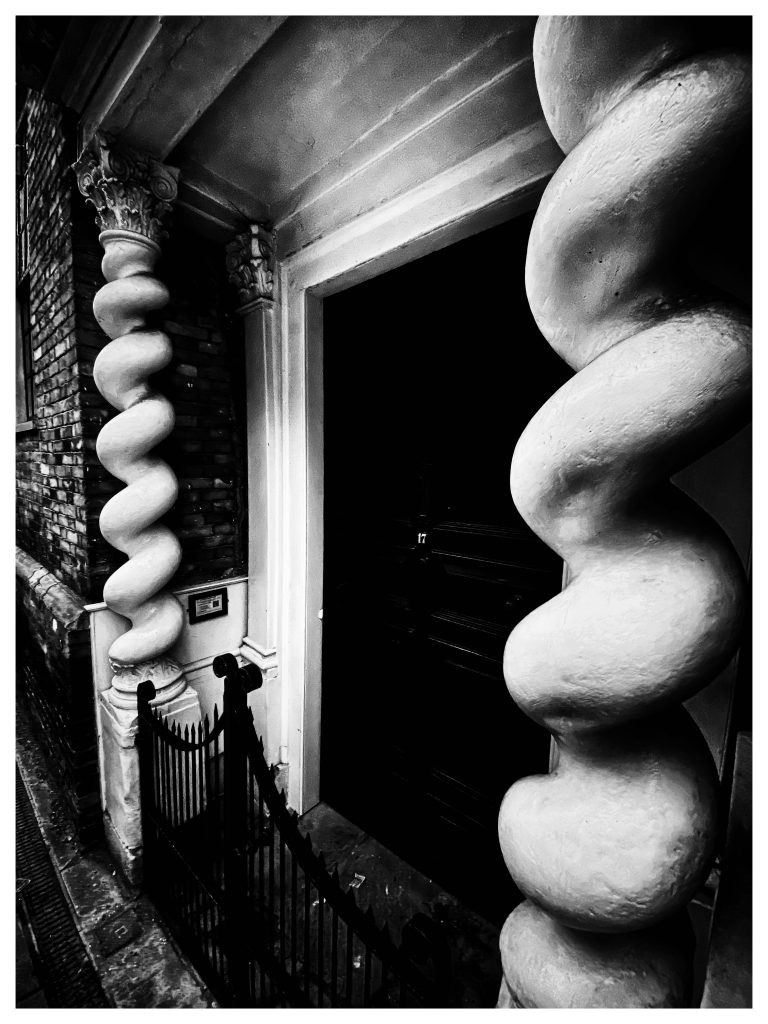The Lynn Mansion That Was Briefly A Prison

Photo © James Rye 2021
Clifton House is an exceptionally fine early eighteenth century house that in its history has briefly served as a prison and as a military headquarters.
Existing medieval merchant properties on the site were remodelled in 1708. The architect was Henry Bell (who also designed other King’s Lynn buildings – the Custom House, the Duke’s Head, and the lost Market Cross on the Tuesday Market Place).
The present house owes its name to William Clifton and his heir who owned it in the nineteenth century. Before then it was referred to as the “Mansion House in Queen Street”.
Barley Sugar On The Front
Features of the house include:

Photo © James Rye 2021
- A twelfth century window.
- Two thirteenth century tiled floors (the largest in-situ tiled floors in any secular building in Britain).
- A fourteenth century vaulted undercroft used by merchants to store their goods.
- A five storey Elizabethan tower (1580s). The apparent need for towers (there were several in Lynn at the time) was so that the merchants could see their ships on the river. In reality, they were often little more than status symbols.
- A series of rooms created by Bell.
- Bell’s remodelling of the street fronts with sash windows and magnificent mahogany, twisted barley sugar columns beside the door.
1643 Out Then In
1643 was in interesting year for the house. Between 28 August and 15 September of that year the town was surrounded and under attack. Despite months of indecision Lynn had eventually declared for King Charles I. As a result the town had been surrounded and was being besieged. The Earl of Manchester (leader of the Parliamentarian army in the Eastern Region) had come to the town with Colonel Oliver Cromwell. They were firing cannon balls across the river from West Lynn in an attempt to bring the town to submission.
Inside the town, Lynn’s two MPs, John Percival and Thomas Toll, were both Parliamentarian supporters and consequently they were placed under house arrest by the Town’s Corporation. Toll was living in what was to become known as Clifton House. It should be remembered that at that time the River Great Ouse was much closer to the back of Clifton House than it is at the present.

Photo © James Rye 2021
Thankfully for Toll, his imprisonment was relatively short. It is recorded that he escaped his house arrest through a window “into the arm of the sea”. It is doubtful that he jumped and swam as few people could swim at the time. He probably got into a boat and rowed (or was rowed) across to the Parliamentarians on the other side of the river.
After the surrender and the occupation by the Parliamentarians who based a garrison in the town for a number of years, Manchester initially used Toll’s house as his military headquarters. It would also have used by Colonel Valentine Walton who was left in charge of the town.
Some Mansion Owners
The present house owes its name to William Clifton and his heir who owned it in the nineteenth century. Before then it was referred to as the “Mansion House in Queen Street”.
A Lynn merchant, George Walden, owned the property in the 1570s and is almost certainly responsible for building the tower.
The last, most significant change to the site came in the late seventeenth century. Simon Taylor, a loyal royalist during the reign of Charles II, and with his fellow town MP, John Turner, was knighted by the King in 1684. He set about remodelling the family home which he had owned since the early 1660s. His son, Samuel Taylor, completed the project.
In 1996 the King’s Lynn Preservation Trust purchased the building because it had become concerned about the state of deterioration. With help from a grant from the Heritage Fund it made urgent repairs to make the building weather-proof and structurally sound.
In 2005 the house was sold to Dr Simon Thurley, then CEO of English Heritage, and his wife Dr Anna Keay, an architectural historian.
© James Rye 2021
See also A King’s Killer in King’s Lynn
Sources
Yaxley, S. ed. (1993) ‘A briefe and true Relation of the Siege and Surrendering of Kings Lynn to the Earle of Manchester’. In Yaxley, S. (1993) The Siege of King’s Lynn 1643, The Larks Press
Websites
